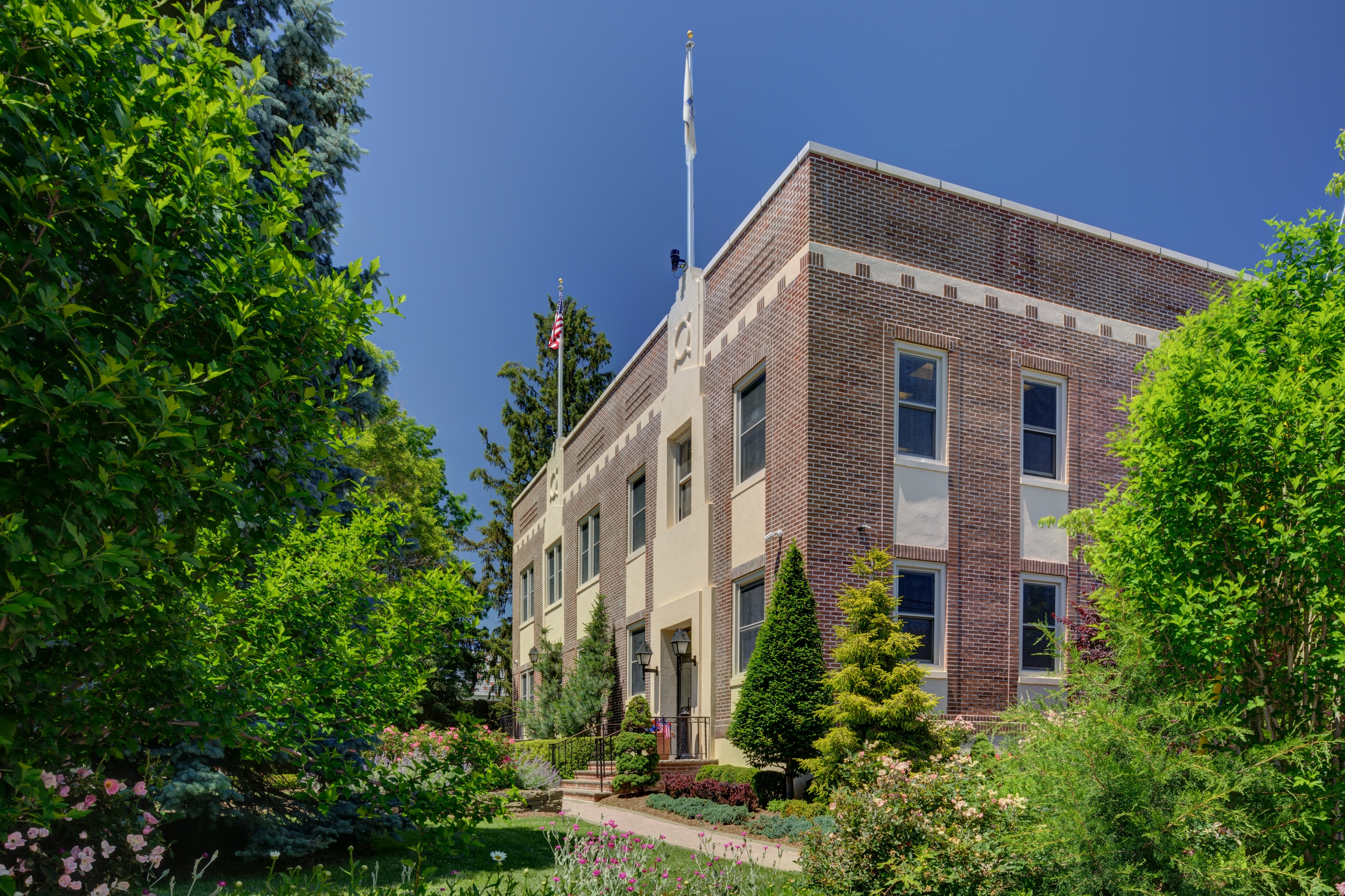May 27, 2017
Reading Time: 4 minutes
On May 4, Bergen County Executive James J. Tedesco III, the Board of Chosen Freeholders, the Department of Parks, the Division of Cultural and Historic Affairs and the Bergen County Historic Preservation Advisory Board, celebrating 35 years of historic preservation in Bergen County, N.J., recognized 13 deserving recipients with Bergen County Historic Preservation Awards.
AIA NJ wishes to congratulate the design team, including AIA N.J. Past President Michael Hanrahan, AIA and Clarke Caton Hintz, for being recognized for their contributions to the preservation of the Closter Borough Hall.

Michael Hanrahan, AIA – 2011 President
“Clarke Caton Hintz was pleased to be part of this wonderful project. It’s always nice to see a valued building restored so that it can continue to serve the community for generations to come” ~Michael Hanrahan, AIA
Award Category: Restoration
Project Team: Mayor Emeritus Sophie Heymann and Council; Michael Hanrahan, AIA Clark Caton Hintz architectural firm; William Dahle, Superintendent, Dept. of Public Works; former Borough Administrators Richard Sheola and Jonathan DeJoseph; former Councilman Thomas Hennessey; members of the Closter Historic Preservation Commission.

When Architectural Historians look at examples of the “WPA Moderne” style, images of Hoover Dam, monumental courthouses in California, grand libraries and post offices in the Midwest, and massive Federal Office buildings in Washington DC come to mind. Which makes the Closter Borough Hall all the more special. Since being incorporated in 1904, Closter municipal officials worked out of their homes, the police were housed in part of a railroad signal tower, and fire fighting apparatus were exposed to the weather. Clearly a solution was needed, but the trying financial times, especially during the Great Depression, made the task daunting. Once land “central to the life of the town” became available, and with labor provided by the Works Progress Administration, the new Municipal Building was finally built. The design fulfilled the essential needs of the Borough back in 1938; a home for municipal offices, a place to hold public meetings, and garages for police and fire department vehicles. All necessary departments in a single compact shell; a functional building, but with a touch of style, a tasteful compilation of brick and stucco, with vertical windows and soaring roof mounted flagpoles. Always useful, Borough Hall was modified to suit the times, losing the flagpoles during WWII when the roof was used by the Civil Air Patrol, with volunteers scanning for enemy planes. When the Police and Fire Departments outgrew the building and moved to other quarters, the original bay doors were filled in, and the garages converted to more office space. Even when an addition was added to the rear of Borough Hall, the character of the original structure remained. But through years of public service, the building began to show signs of wear. Rather than abandoning a faithful public servant, the Borough had the foresight to preserve and rehabilitate the building. The care with which the renovations have been undertaken is admirable. In restoring Closter Borough Hall to its glory as the heart of municipal government, it is a source of pride for the entire community, and a shining example of what can be done to acknowledge the past, while serving public needs for the present, and into the future.
 The Bergen County Historic Preservation Advisory Board is made up of 11 members, including John Cohen, AIA, William J. Martin, AIA, Matthew Wolchko, AIA and chaired by Bruce A. Barton, AIA. Bill Martin, AIA NJ Public Awareness co-chair, also served as master of ceremonies for the evening.
The Bergen County Historic Preservation Advisory Board is made up of 11 members, including John Cohen, AIA, William J. Martin, AIA, Matthew Wolchko, AIA and chaired by Bruce A. Barton, AIA. Bill Martin, AIA NJ Public Awareness co-chair, also served as master of ceremonies for the evening.
2017 marks the 51st year of the National Historic Preservation Act, the most far-reaching preservation legislation ever enacted in the U.S. Signed into law by the President on October 15, 1966, the Act formally recognized historic preservation as an important policy of the United States. The law established a federal framework for preserving the country’s historic and cultural fabric, which included a national preservation program and systems of procedural protection. The Act codified the National Register of Historic Places, required federal agencies to consider the impact of new construction on historic sites, and provided for public comment before a site can be altered. “The Congress finds and declares that: (a.) the spirit and direction of the Nation are founded upon and reflected in its historic heritage; (b.) the historical and cultural foundations of the Nation should be preserved as a living part of our community life and development in order to give a sense of orientation to the American people; …. – – Preamble to the National Historic Preservation Act of 1966
Excerpts of this article are taken directly from the awards ceremony program.
By WeSpeak Easy | Posted in AIA-NJ News, Architecture in NJ, Historic Resources, Members & the Community, Uncategorized | Tagged: 2017, BergenCounty, HistoricPreservation, MichaelHanrahanAIA, WilliamJMartinAIA, wjmarchitect | Comments (0)
Architects are creative professionals, educated, trained, and experienced in the art and science of building design, and licensed to practice architecture. Their designs respond to client needs, wants and vision, protect public safety, provide economic value, are innovative, inspire and contribute positively to the community and the environment.

414 Riverview Plaza, Trenton, NJ 08611
(609) 393-5690
info@aia-nj.org